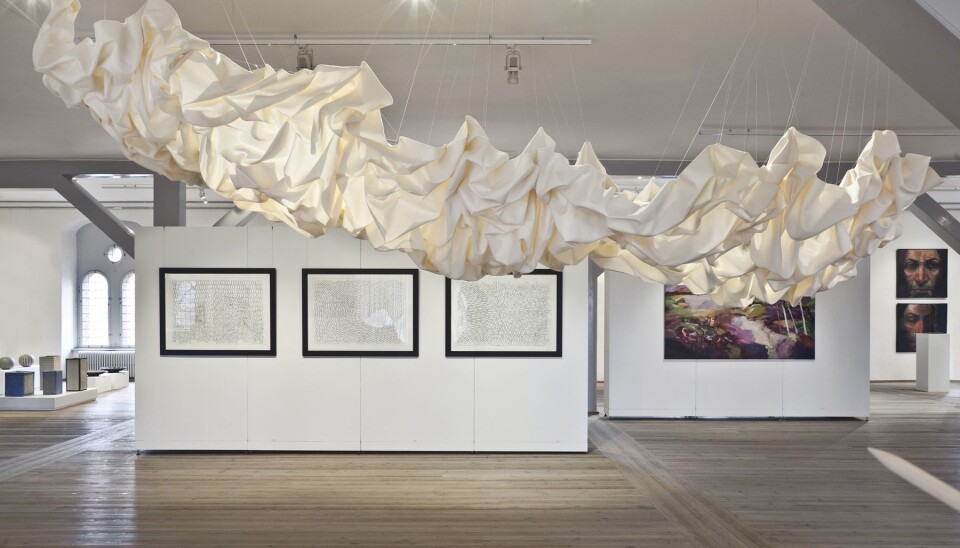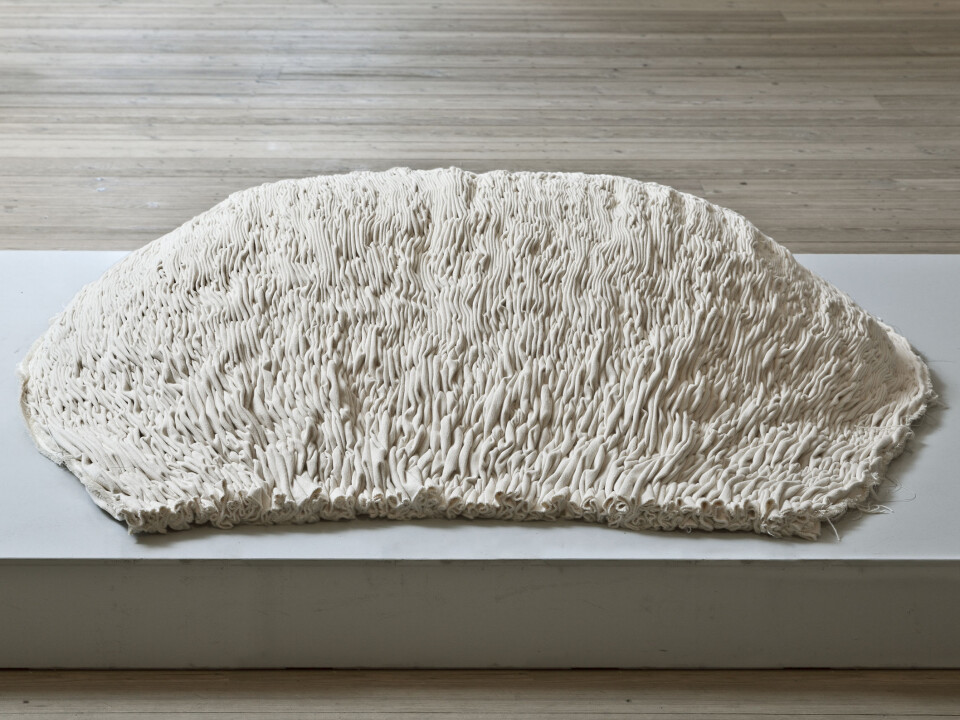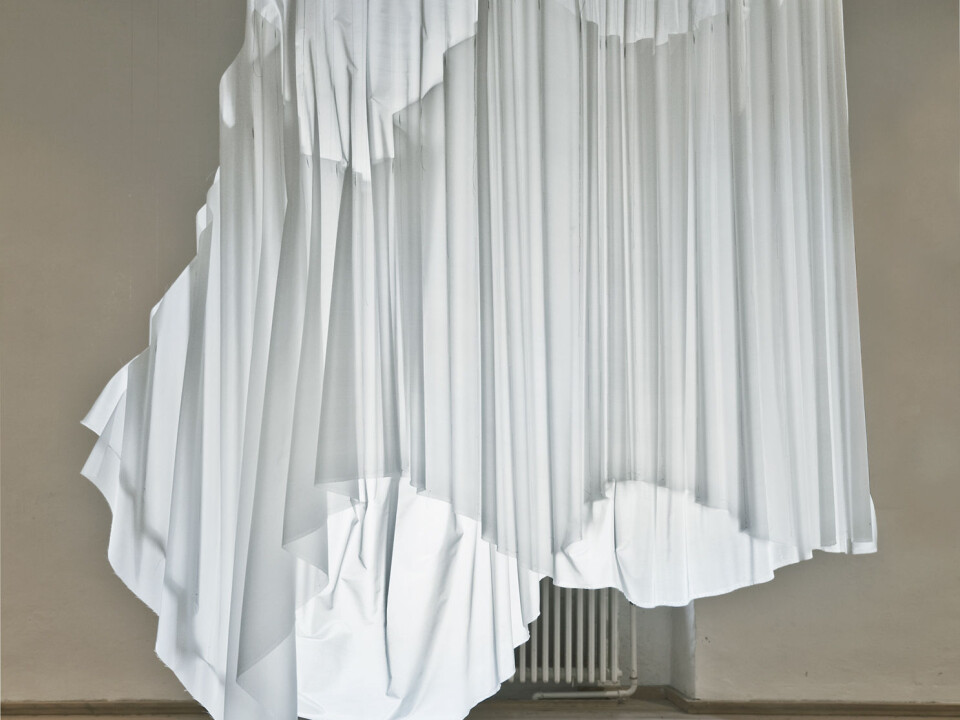
Reduce office noise with pretty textiles
Using clouds, wrestlers and turtles made from textile, a researcher has come up with some aesthetically pleasing ways to reduce office noise.
There was a time when wall-to-wall carpets, velvet curtains and upholstered sofas were all the rage.
Those days are gone now.
Current architectural fashion says that we should decorate our rooms with smooth surfaces of concrete, glass and steel, which do not leave much space for the once coveted textiles.
However, getting rid of the wall-to-wall carpets, the velvet curtains and the upholstered sofas not been without its costs.

The absence of soft surfaces has turned offices into concrete spaces where noises and echoes can travel freely.
Now a PhD thesis proposes some new ideas for reintroducing these sound-absorbing textiles.
”My PhD thesis shows that if we use the textiles ’correctly’, they can absorb sounds without the need to compromise on today’s special architectural expression,” says Cecilie Bendixen, of the Royal Danish Academy of Fine Arts, Schools of Architecture, Design and Conservation.
She has just defended her PhD thesis ‘Så vidt et rum’ (‘So wide a space’), which points towards a potential renaissance for textiles.
Light and space are problematic

The thesis is based on the consequences of the past century’s focus on light and air in living rooms, offices, institutions, schools, museums and the like. We now prefer large windows, high ceilings and not too much furniture.
The consequence of this is sounds that are free to bounce off ceilings, floors and walls in materials that effectively rebound the sounds and cause a long reverberation time, making it sound as if it were in a church.
Such poor acoustics have consequences:
”Rooms with poor acoustics have an effect on people,” says Bendixen. “It becomes difficult to have a conversation and may even cause fatigue, concentration problems or stress. So it makes sense to look for ways to improve the acoustics, and here we may be looking at a comeback for textiles.”
The great acoustic potential of textiles
My PhD thesis shows that if we use the textiles ’correctly’, they can absorb sounds without the need to compromise on today’s special architectural expression.
In her thesis, Bendixen studied:
- What properties give textiles the good sound absorption capacity.
- How textiles should be shaped to optimise sound absorption.
- Where in the room the textiles should be placed to give the optimal sound absorption.
- How textiles can be used for sound absorption without compromising the architectural expression of the room.
The final part of the study was based on the researcher’s own interpretation of theories in art history that deal with how materials and shapes helped form the visual expression of a given room.
”In this way I create a link between how the textiles should be formed and placed to give the optimal sound and how the textiles need to be formed and placed in the room to provide the architectural expression we want. I try to unify these two elements in my research.
Folded textiles drown out the noise
The study revealed that textiles with a weave density that was neither too high nor low resulted in the best sound-absorbing effect.
It also showed that folds in the textiles, as in when a curtain is drawn, are useful because they not only improve the acoustics, but can also be used for creating a very modern interior design.
This opens up for a wide variety of interesting applications:
”Walls made out of folded textiles are an example of the effective use of textiles in large rooms,” she explains.
“Textile walls do not leave you with a restrictive feeling like regular walls do. This means that you can divide rooms into compartments with textiles without feeling that you’re sitting in a large room, e.g. an office landscape, as the textiles are movable and transparent. The textiles would also absorb the sounds.”
Turtles on the floor
Bendixen hopes that her research with textiles can provide designers and architects with a new tool for creating rooms with less noise pollution.
”My thesis has resulted in a series of guidelines that are exemplified in my designs for how to shape textiles to make them work acoustically and architecturally. I hope that designers and architects will be making use of these guidelines in the future.”
----------------
Read the Danish version of this article at videnskab.dk
Translated by: Dann Vinther






